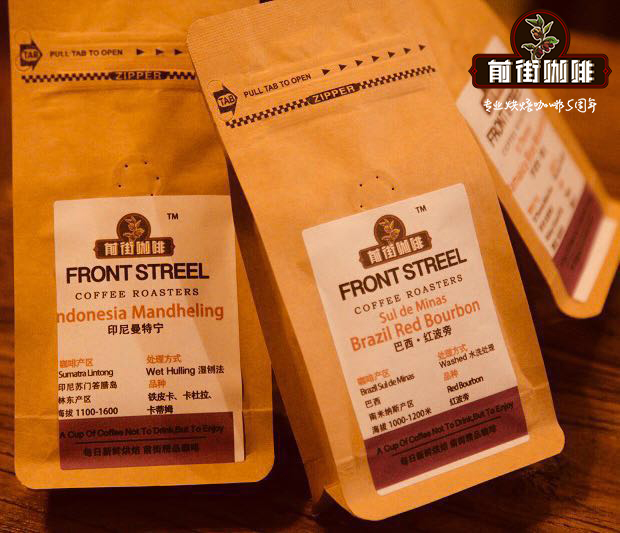Ethiopian Coffee Bean Story-relationship between Ethiopian Coffee Bean grading and defect rate

Professional coffee knowledge exchange More coffee bean information Please pay attention to coffee workshop (Weixin Official Accounts cafe_style)
Of all the coffee-producing areas, Ethiopia is the most familiar, because it is recognized as the birthplace of coffee. At first coffee fruit was considered a fruit rather than a drink.
Ethiopian coffee beans have a wide variety of flavors, ranging from citrus and floral to candied fruit and even tropical fruit. The best washed coffee may exhibit elegance, complexity, and delicacy, while the best sun-treated coffee exhibits exuberant fruity and unusual charm.
● Production history:
Coffee was exported from Ethiopia in the early 17th century, when Ethiopian coffee beans came from wild coffee trees in Kaffa and Buno, not coffee plantations.
In the 19th century, Ethiopian coffee came in two different grades: Harari coffee (grown around Harrar town) and Abyssinia coffee (grown wild outside Harrar);
The coffee industry expanded in the 1950s with the emergence of a new grading system;
1957 Nationl Coffee Boaed of Ethiopia established.
In 1991, the Ethiopian People's Revolutionary Democratic Front overthrew the military government and the country began to move towards democracy. Ethiopia's entry into international markets brought with it fluctuations in prices. Coffee farmers were unable to control fluctuations in prices, which prompted the rise of co-operatives;
The Ethiopian Commodity Exchange (ECX), established in 2008, identifies the origin of washed coffee with a number 1- 10 after coffee is delivered to ECX warehouses. All sun-treated coffees are labeled with the number 11, and then graded 1- 9 according to quality, or UG for ungraded.
● About classification:
Ethiopia's coffee grade is determined by the number of defective beans per 300g of coffee beans and the cup quality. Coffee beans for export, with grade G-1 as the highest grade, up to grade G-5.
grades
Number of defects
G-1
0--3
G-2
4--12
G-3
13--25
G-4
26--46
G-5
47--75
Origin:
●Sidamo:
Altitude: 1400-2200 m
Harvest period: October-January of the following year
Breed: Native Breed (Heirloom)
Sidamo's coffee is mostly washed and sun-dried, which is very popular with coffee fans who like fruity and rich aromas. The region also produces some of Ethiopia's highest coffee varieties.
●Harrar:
Altitude: 1500-2100 m
Harvest period: October-February of the following year
Breed: Native Breed
This region is one of Ethiopia's oldest coffee producing regions. Coffee beans from local sources taste quite unique, even after the sun treatment of coffee, the taste may feel impure, with a wood-like smell of soil, to a clear blueberry fruit. Coffee practitioners are often impressed, and many identify it as a coffee region that opens their eyes to the variety of flavors in their cups.
●Yirgacheffe:
Altitude: 1750-2200 m
Harvest period: October-January of the following year
Breed: Native Breed
The coffee in this area is special. Many washed coffees from Yigacheffe have explosive aromas, rich citrus and floral notes, and a light and elegant taste. This is undoubtedly one of the best and most interesting coffee growing areas; the best coffee from here is expensive. For many people, these coffees taste more like Earl Grey and are definitely worth a try. This area also has sun-cured coffee, which tastes unique and delicious.
● Cultivation methods:
Ethiopia's coffee cultivation methods are relatively extensive (completely natural growth, without artificial intervention), and generally there are the following four types:
Plantation coffee: This is produced intensively on plantations to increase yields. General state-owned estates will adopt this planting method, and the output accounts for 10%-15% of the country.
Garden coffee: one of the most typical coffee growing methods. Farmers put coffee trees and other crops together around their yards. Coffee grown this way accounts for about 50 percent of the total crop.
Jungle coffee: Ethiopian coffee trees are self-grown, harvested and prepared after they bear fruit on trees that grow naturally in the forest.
Semi-bush coffee: coffee trees grow in semi-natural forests, in order to give coffee trees full sunlight, people will be pruning the surrounding trees, and then remove weeds and other artificial care.
● Ethiopian coffee beans brand recommendations
Front Street Coffee Roasted Ethiopian Coffee Bean-washed Yegashfi g1 [Kocher] has full guarantee in brand and quality. More importantly, the cost performance was extremely high. A pack of half a pound weighed 227 grams and the price was only about 75 yuan. According to the calculation of 15 grams of powder per cup of hand-brewed coffee, a pack can make 15 cups of coffee, and each cup of single-item coffee only costs about 5 yuan, which is extremely cost-effective for the price of dozens of cups sold in cafes.
Qianjie Coffee: Guangzhou's baking shop, small store but a variety of beans, can find a variety of famous beans, but also provide online store services. https://shop104210103.taobao.com
Important Notice :
前街咖啡 FrontStreet Coffee has moved to new addredd:
FrontStreet Coffee Address: 315,Donghua East Road,GuangZhou
Tel:020 38364473
- Prev

Latin American first Coffee Brand Colombian Juan Valdez Juan & #8231; Diz Coffee
Professional coffee knowledge exchange more coffee bean information please follow the coffee workshop (Wechat official account cafe_style) Juan Valdez Juan Diz FINCA from Colombia strictly selects the friend D.C. Who has just returned from Central America and brought ── Juan Valdez Juandez Coffee, the first Colombian coffee brand in Latin America, to us to taste. Speaking of Juan Valde,
- Next

What's the flavor of Ethiopian coffee beans? is Ethiopian coffee beans expensive?
Professional coffee knowledge exchange more coffee bean information please follow the coffee workshop (Wechat official account cafe_style) the secret of Ethiopian coffee beans: the original name of coffee is not coffee. In Ethiopia, there is a province called Kafa province, which produces a kind of plant fruit, which has mellow, sweet, fruity, sour and bitter flavors, and has a refreshing and calming effect after eating.
Related
- Detailed explanation of Jadeite planting Land in Panamanian Jadeite Manor introduction to the grading system of Jadeite competitive bidding, Red bid, Green bid and Rose Summer
- Story of Coffee planting in Brenka region of Costa Rica Stonehenge Manor anaerobic heavy honey treatment of flavor mouth
- What's on the barrel of Blue Mountain Coffee beans?
- Can American coffee also pull flowers? How to use hot American style to pull out a good-looking pattern?
- Can you make a cold extract with coffee beans? What is the right proportion for cold-extracted coffee formula?
- Indonesian PWN Gold Mandrine Coffee Origin Features Flavor How to Chong? Mandolin coffee is American.
- A brief introduction to the flavor characteristics of Brazilian yellow bourbon coffee beans
- What is the effect of different water quality on the flavor of cold-extracted coffee? What kind of water is best for brewing coffee?
- Why do you think of Rose Summer whenever you mention Panamanian coffee?
- Introduction to the characteristics of authentic blue mountain coffee bean producing areas? What is the CIB Coffee Authority in Jamaica?

